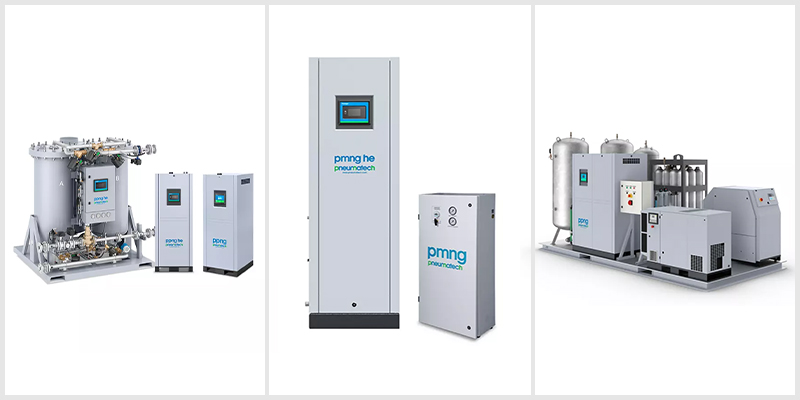
Producing your own nitrogen is the smart professional choice. Using an on-site nitrogen generator is more cost-efficient, dependable and sustainable than gas deliveries. Find out below how an N2 generator works, and what its uses and benefits are.
A nitrogen generator is a machine that separates nitrogen from compressed air, which consists of 78% N2 and 21% O2. A gas generator is the easiest, most flexible, cost-efficient and sustainable way of obtaining your own nitrogen supply.
On-site generation offers convincing benefits compared to liquid or gaseous N2 deliveries.
To produce your own nitrogen, all you need is a compressor and a nitrogen generator.
That’s because air consists of 78% nitrogen and 21% oxygen. When you feed compressed air into a nitrogen generator, it separates the N2 from the O2. There are two main technologies to produce nitrogen:
Pressure Swing Adsorption (PSA) separates nitrogen from compressed air with adsorbent materials. As the air passes through a vessel filled with Carbon Molecular Sieves, the oxygen in the air is adsorbed by the CMS. This allows only nitrogen with a purity of up to 99.999% to reach the outlet. PSA generators are ideal for high-purity, high-flow applications.
Membrane technology is a very simple, reliable and continuous N2 production method. Compressed air is pushed through hollow polymer membranes. The oxygen in the air escapes through the fiber walls and permeates into the atmosphere. This leaves quality nitrogen with a purity between 95% and 99.5% at the generator outlet.